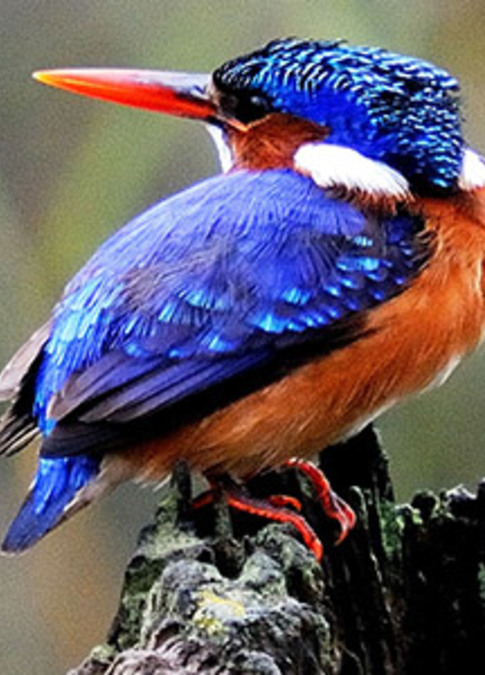Hippos
When last we were at Kariega a couple of hippos had taken up residence in the dam close to Reception and as a result we were unable to walk the Wildebeest Trail; the hippopotamus despite its bulk being capable of moving pretty quickly out of water and being potentially dangerous.
Apart from man the hippo, like the elephant, has no natural enemies other than perhaps the lion, and at one time there must have been hundreds of thousands to be found in the rivers of Africa, from the Nile Delta to the Liesbeeck River in present day Cape Town. Only 18 days after his arrival, Commander Jan van Riebeeck of the Dutch East India Company and founder of the Dutch settlement at the Cape noted in his journal on 24 April 1652 that his men had captured a sea-cow “the weight of two ordinary fat oxen”. He commented on the thick skin, “monstrous head” and “sharp, protruding teeth”, and also the difficulty they had killing the beast. However, the effort was worth it, for “the men ate the flesh as it tasted good”.
It was Peter Kolbe who, in 1705, noted that the “sea-cow” that the Dutch recorded at the Cape was one and the same animal as the “river horse” of the noted Swedish naturalist, Linnaeus (Carl von Linné) who had named it Hippopotamus amphibias. Many of the early travellers observed the presence of hippos in the rivers along the south-east Cape coast, and some came across them far further inland. Indeed fossil evidence indicates that hippos were not unknown in the Karoo. Some explorers, such as Heinrich Lichtenstein during the opening years of the 18th century, attempted to shoot hippos for scientific study, but in general it was the flesh, fat, hide and teeth that attracted the hunters. In all tons of lead must have been fired at these creatures of the rivers and swamps, but their ability to stay submerged for long periods, and their skill in hiding among reeds and bushes enabled many to survive the barrage, thank goodness.
From about the beginning of the 20th century the hunting of hippos decreased. Their teeth were no longer required for the production of dentures, dice, knife-handles, billiard balls, piano-keys and ornaments, and as the ox-wagon gave way to the railway train and motor transport, so the demand for whips and sjamboks made from hippo hide with which to urge on the oxen also decreased. Likewise there were now also other sources of fat, and no great demand for hippo meat, which despite its apparently good flavour, sold for only half the price of beef. However, new threats developed. More and more land was cleared for agriculture, and farmers understandably objected strongly to the presence of a two ton herbivore that could consume up to 130 kg of vegetation during a single nocturnal meal.
During our stay at Kariega visitors, hearing of the hippos in the dam, expressed surprise that they had travelled so far from their usual haunts in the river, but in the lowveld of Mpumalanga it is not uncommon during dry seasons for hippos to travel as much as a kilometre or more from their pools to a feeding ground, and there are several records of these animals covering greater distances. The greatest recorded distance covered by a hippo was established in the years 1928-1931 when a hippo crossed the Tugela River in northern Kwazulu-Natal and set out on a trek of roughly 1600 km, during the course of which it was not only seen in the central city area of Durban, frightening any number of people who came across it unexpectedly, but also endearing itself to the people of South Africa to such an extent that it became known jocularly as Hubert. The hippo’s adventures were reported not only in the local press, but also internationally, and it came as a shock to all when its travels ended abruptly in April 1931 near King William’s Town when it was shot by a farmer. At the time it was discovered that the animal was in fact a female, and posthumously she was rechristened Huberta. Her mounted figure now stands in the Amathole Museum in King William’s Town.
To a hippo a climb up the hill from the Kariega River to the dam near Reception is a mere stroll in the park!








